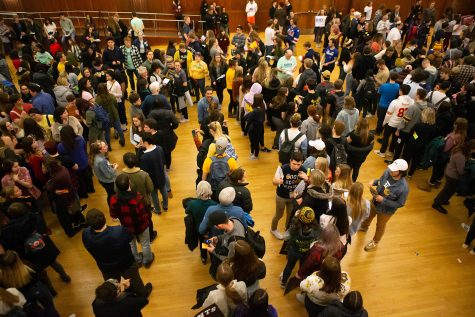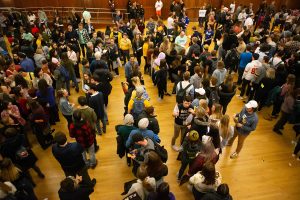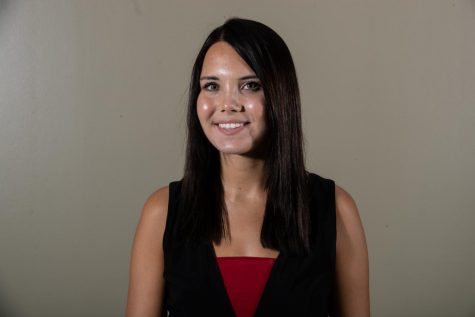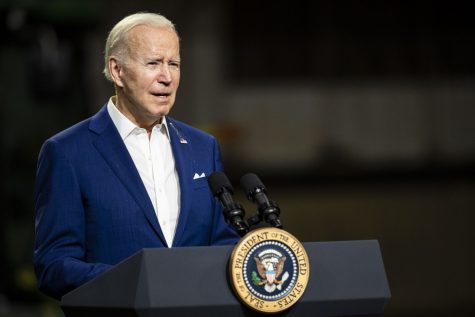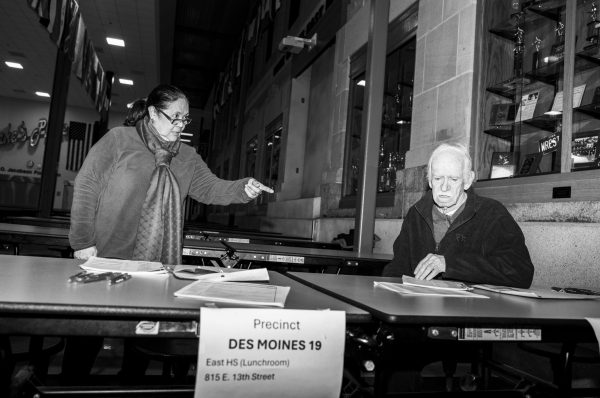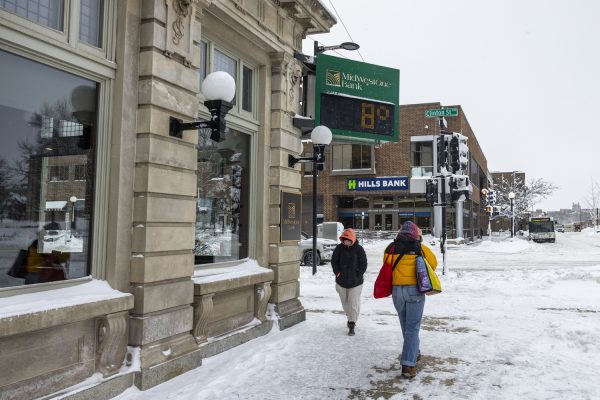Where did support for nonviable candidates go in the caucuses?
With five candidates competing for even numbers of supporters, second choices in the Iowa caucuses Monday night will likely be a deciding factor once results are reported.
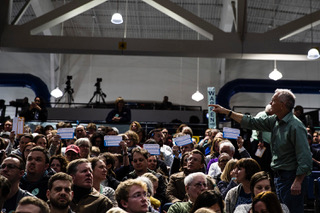
Supporters of Sen. Elizabeth Warren, D-Mass., hold up cards during the caucus at Des Moines Precinct 62 in the Knapp Center on Monday, February 3, 2020. The caucus head count reached 849 people, leaving 127 individuals needed for the candidate to be declared viable. Sen. Warren received 212 1st round total head count votes.
February 4, 2020
DES MOINES — U.S. Senator from Minnesota Amy Klobuchar, entrepreneur Andrew Yang, businessman Tom Steyer, and sometimes former vice president Joe Biden. While they had fervent supporters and may have nabbed a few delegates at the Iowa caucuses Monday night, these candidates and a few others were largely unable to gain viability in many precincts. So where did their supporters go?
After initial preferences are expressed at a caucus and the first group counts are tallied, groups that failed to reach viability — gain 15 percent of attendees — are given the chance to realign to another group.
For the first time this year, the Iowa Democratic Party announced the raw vote totals of the first alignment along with the second alignment and the final state delegate equivalents. In previous years, the state party only released the delegate counts.
Because of technical issues delaying reporting of results, the party had not released the final counts by press time late Monday night. Still, Daily Iowan reporters fanned out to precinct locations across the state and found some stories of what happened to the supporters of less popular candidates.
Adam Van Wyk, 49, moved to the Sen. Elizabeth Warren, D-Mass., camp after his first choice, Klobuchar, didn’t reach viability at Des Moines Precinct 65 at Lincoln High School. He said he wanted to support a woman for the Democratic nomination.
“I’ve always liked Warren and Sanders’ ideas, but they always seemed a little pie in the sky to me,” Van Wyk said. “But Amy felt a little more realistic about how to achieve some of these things.”
Van Wyk said Klobuchar’s supporters were split pretty evenly between Warren and former Vice President Joe Biden after the realignment. He said many Klobuchar supporters favored Biden because of his experience as the vice president.
Randall Hoffmann, 28, the Yang precinct captain at Des Moines Precinct 65, moved to the Sen. Bernie Sanders, I-Vt., group after Yang failed to gain viability. He said it didn’t make any sense to him to go undecided in the second alignment, and he wanted to realign with a top-tier candidate, because he felt like that was the most effective use of his caucus decision.
“I went right to Bernie because that’s where my heart is,” he said.
On Jan. 29, Yang predicted in a roundtable with Bloomberg News reporters that many of his supporters may move to Sanders’ groups in later rounds if he didn’t reach viability.
However, no candidate drew a majority of Yang supporters at Hoffmann’s precinct. He said seven or eight of the 15 people that aligned with Yang on the first round decided not to realign. He was the only one of his group that realigned with Sanders, while others went to Warren and Buttigieg.
“I think that Pete ended up benefiting the most from realignment from what I was able to see,” Hoffman said. “From my understanding, that was a group that was very strong in this precinct specifically.”
Buttigieg had 88 people in his group on the first alignment, and jumped to 109 after realignment. Warren gained 21 supporters, going from 71 to 92, while Sanders, who had one of the largest groups on the first alignment, only gained four caucusgoers in the second round, going from 85 to 89.
At Callanan Middle School in Des Moines, Stella Perlowski, 17, first caucused with Biden but was forced to realign when he didn’t reach viability. Perlowski said she was being courted by Klobuchar, Sanders, and Buttigieg supporters. She ultimately decided to align with Buttigieg.
“The biggest thing that they said was he has a good chance of beating Trump better than Bernie, and that’s the biggest thing that I’m going for,” she said.
In other locations, caucusgoers chose to leave rather than to realign with another candidate.
In Iowa City Precinct 3 at the University of Iowa Field House, it was a battle of the stickers — a Warren supporter stood fast at the door with her stickers, only for a Sanders supporter to be steps away, touting stickers for his candidate. Up the crowded stairs stood entrepreneur Andrew Yang supporters with signs, more Sanders and Warren supporters flanking on either side.
Caucusgoers entered one half of the gymnasium, marked off by black netting, and many filed into sections in support of Sanders, Warren, Yang, former Vice President Joe Biden, former South Bend, Indiana Mayor Buttigieg, and Sen. Klobuchar, D-Minn. Undecided caucusgoers stood in the middle of the sea, as supporters of every side began to float over, to try to sway them one way or another.
“I feel kind of flustered,” Judy Siara, an 18-year-old first-time undecided caucusgoer said. “I feel like I was more excited before I actually got here, it’s more in your face.
What would follow would be a three and a half hour ordeal, ending in a confusing conundrum.
The first count came in at 490 caucusgoers, leaving 74 to be the viable number. Only Sanders and Warren had met viability, with 196 and 106 respectively, with Yang and Buttigieg falling just short with 59 and 62, and Biden and Klobuchar falling short at 10 and 13.
What happened next was something that Nicholas Johnson, the alternate precinct chair, has never seen in his years involved with the caucus with his wife, Mary Vasey.
The vice chair, who had taken over for the precinct chair, told individuals that they could either realign to a viable group or to form a viable group, or that they could mark on their preference cards that they choose to not align with a viable candidate and leave.
One hundred-forty-seven caucusgoers chose to do that, leaving without realigning to a viable group. While the Yang supporters initially made an effort to recruit from the Buttigieg, Biden, and Klobuchar group, they could not make viability. Many of those who had been in a viable group also left, their decision already counted.
The final count after the realignment had the Warren count at 130, and the Sanders count at 213. However, the math used to find the delegates were to be awarded left two delegates unaccounted for; the precinct had to delegate 7, Warren had won 2 and Sanders had won 3. The problem came from using the original number of caucusgoers who showed up, 490, rather than those who had realigned to a viable candidate, 343.
The question became then what to do with those who had simply left. This became a long debate, and as the vice chair tried to get the Iowa Democratic Party on the phone to no avail, it was determined that delegates would be determined by the number of people who had stayed and realigned.
“I think this is a good, common sense, rational way to solve a dilemma when the law refuses to answer your call,” Johnson said. “I have never before encountered a caucus where there were people who left rather than realigned to a viable group.”





